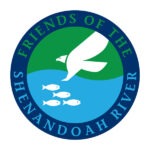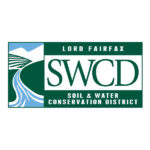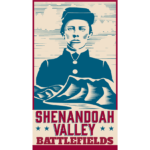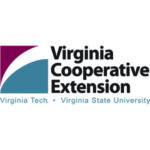In 2017, recognizing an opportunity to increase coordination and teamwork towards achieving shared goals in water quality, soil health, and farmland protection, Alliance for the Shenandoah Valley spearheaded the creation of the Shenandoah Valley Conservation Collaborative (SVCC).
Shenandoah Valley Conservation Collaborative

The SVCC is a partnership of regional nonprofits, land trusts, watershed groups, and state and federal conservation agencies. Through the SVCC, these partners identify opportunities, coordinate expertise, and motivate conservation action. The SVCC creates a formal way for partners to leverage each other’s strengths, networks, and funding sources to increase outcomes beyond what any partner could acting individually.
Through the SVCC partners have brought more than $6 million to our region for land and water conservation. This funding goes towards:
- Protecting rural land in permanent conservation easements
- Implementing practices on farms that improve local water quality and build healthy soils
- Improving outreach and networking with landowners and farmers
- Managing the Shenandoah Valley Fund
- Testing innovative approaches to land and water conservation
SVCC Staff
The SVCC is supported by two full time staff members, the Project Manager who works to build collaborative capacity and strengthen the partnership, and the Conservation Field Assistant who works directly with local Natural Resources Conservation Service and the Soil and Water Conservation Districts.


Owen Ferguson
Conservation Field Assistant, Shenandoah Valley Conservation Collaborative
…

Caitlin Worsham
Small Watershed Coordinator, Shenandoah Valley Conservation Collaborative
…
Collaborative Members
Conservation Landowner Profiles
Resources
Collaborative Support:
- Land Trust Alliance and Chesapeake Bay Funders Network
- National Fish and Wildlife Foundation
This material is based on work supported by the U.S. Environmental Protection Agency (Assistance Agreement No. CB96358201) and the National Fish and Wildlife Foundation’s Chesapeake Bay Stewardship Fund, which promotes community-based efforts to develop conservation strategies to protect and restore the diverse natural resources of the Chesapeake Bay. The views and conclusions contained in this document are those of the authors and should not be interpreted as representing the opinions or policies of the U.S. Government or the National Fish and Wildlife Foundation and its funding sources. Mention of trade names or commercial products does not constitute their endorsement by the U.S. Government, or the National Fish and Wildlife Foundation or its funding sources.
Related News
Wake Up and Make a Difference!
Join the Alliance staff, board members, community members and partners to celebrate progress towards clean water, conservation and vibrant communities in Harrisonburg and Rockingham.
Trying Something New in Smith Creek Watershed
One of the challenges of farming is how difficult it can be to try new methods—even if they have been shown to lead to reduced costs, increased productivity or improved farm health.
Expanding the Grassland Habitat Program
We are eager to assist farmers in adopting new bird-friendly practices such as delayed spring haying and summer pasture stockpiling.
Bringing All Resources
By weaving together the conservation staff knowledge and all available funding sources, we are able to channel resources to achieve the greatest impact.
Transportation Planning & Land Conservation go Hand-in-Hand
With a guarantee that there will never be subdivisions, supermarkets, or strip malls to service, replacing a rural roadway with a four lane highway becomes a poor investment.
What’s so funny about Peace, Love, & Land Conservation?
How can one protect a viewshed, not only for today and tomorrow, but forever? Enter the land protection tool known as the conservation easement.
Taking care of our piece of the Bay
We are the first stewards of the water that travels from our springs into our streams, through our fields and towns and eventually into the Chesapeake Bay.
A happy farm and a healthy watershed in Page County
The Cumbia family have grown and adapted their management so that their farm operates in concert with the resources they steward on their property.
Catching the Land Protection Bug
Last fall, Robert Hupman and four generations of his family celebrated a new conservation easement protecting their 432 acres of mountain land.
Summer 2021 Pasture Walks
This summer, more than 60 area producers joined Shenandoah Valley Conservation Collaborative (SVCC) partners to tour two local farms.



![TheAlliance_Logo[Two-Color]](https://shenandoahalliance.org/wp-content/uploads/2020/04/TheAlliance_LogoTwo-Color-150x150.png)





























